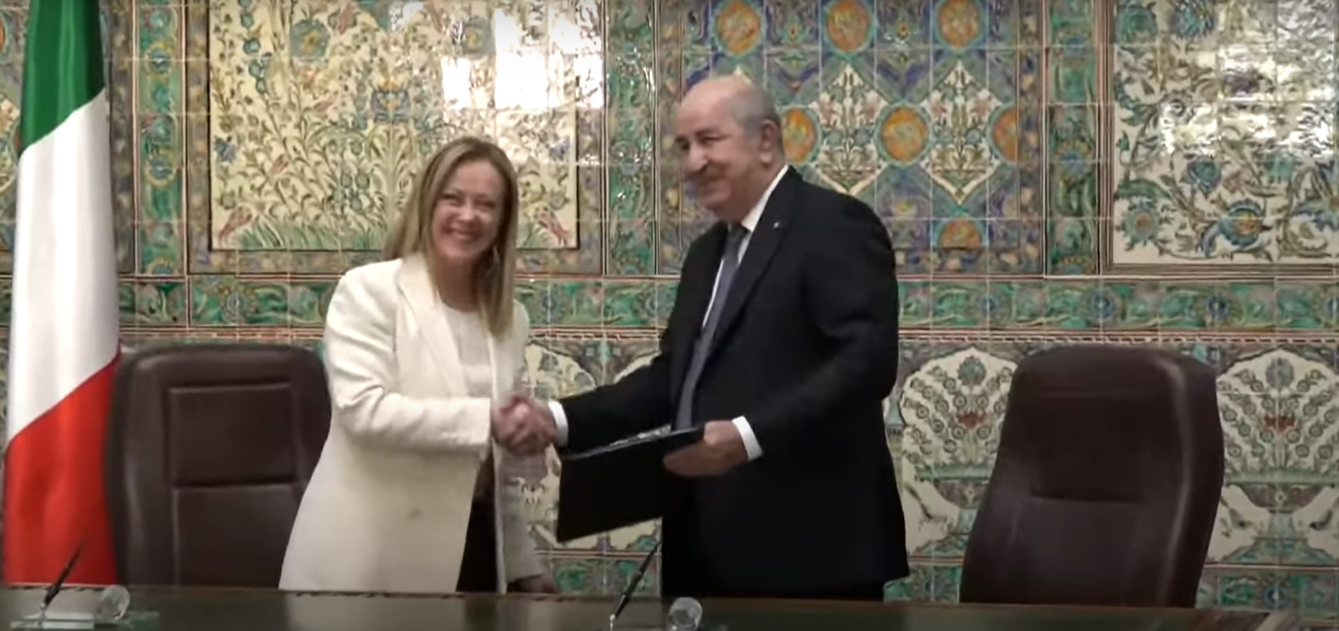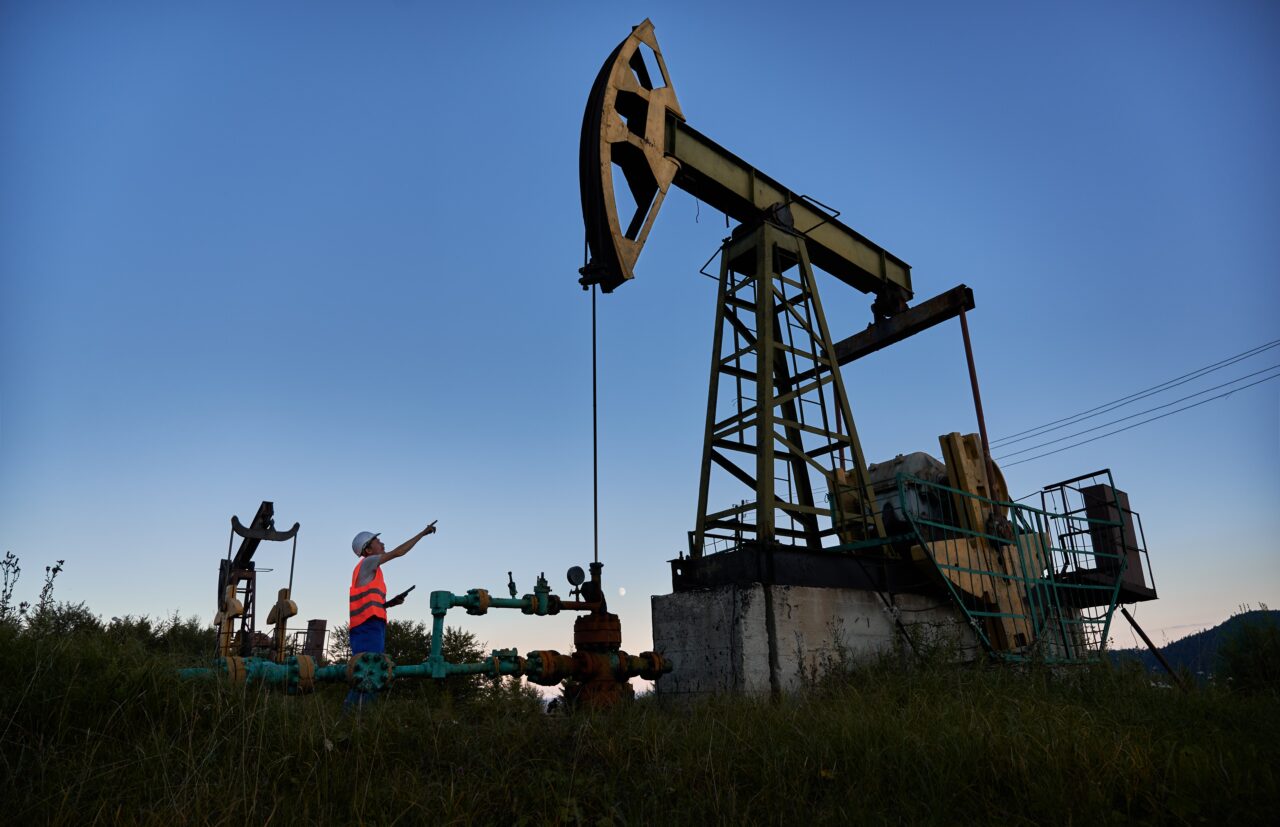The Mattei plan is due to be unveiled in October. It is a plan that Italian Prime Minister Giorgia Meloni has described as a “model of non-predatory cooperation in which both partners must be able to grow and improve”. The project aims to achieve total independence from Russian gas within two years, transforming Italy into an energy hub between North Africa and Europe. Thanks to the construction of new pipelines, Italy would become an exporter of natural gas and hydrogen to Germany and Austria, as well as a link between North Africa and central and northern European countries.
In the background (though not in the foreground) is the issue of migration. Indeed, there are concerns that the whole plan is linked to the aim of reducing immigration to Italy. The details of the Mattei plan have not been officially revealed. This dossier contains some of the leaked details that are available so far.
On the cover photo, Oil extraction © anatoliy_gleb/Shutterstock.com

Role of migration in the plan
“Migration management” is at the heart of the Mattei plan. Italian Prime Minister Giorgia Meloni discussed the issue in Libya with both General Khalifa Haftar and Abdul Hamid Mohammed Dbeibeh, the interim Prime Minister. In April 2023, Italy donated five ships to the Libyan coastguard in Tripoli to improve security operations in the Mediterranean. This dispatch confirmed the policy initiated in 2017 by the then Minister of the Interior of the Renzi government, Marco Minniti.
Another strategic country is Tunisia. During Meloni’s visit with European Commission President Ursula von der Leyen and Dutch President Mark Rutte in June, the immediate allocation of €105 million to support the Tunisian coastguard and border police was announced. In recent months, Tunisia has become one of the most important links between the African continent and Europe. In July, it was the country from which most migrants set off for Italy, overtaking even Libya. According to estimates by the UN Refugee Agency (UNHCR), Tunisia already accounted for 31% of landings in 2022, second only to Libya with 51%. In 2023, the situation was reversed and Tunisia became the first transit country for migrants to Italy.
Between the first meeting on 11 June and the signing of the Memorandum of Understanding on 16 July, departures from Tunisia rose sharply. According to NGO Open Polis, this dynamic points to the most obvious risk of the strategy of externalising the borders: “allowing a third country to use the leverage of migration as a bargaining chip against Europe. A phenomenon that has also occurred in the case of Libya and Turkey”. It is well known that migrants in Tunisia live in extremely precarious conditions. Hundreds of sub-Saharan migrants have been deported to desert areas near the border with Libya, without food or water, or to military zones where unauthorised persons (such as journalists) are not allowed to enter.
Algeria, Libya and Azerbaijan: Italian energy partners
In 2022, Algeria was Italy’s largest gas supplier, replacing a large part of imports from Russia. Despite the increase, however, it did not reach the levels promised in the agreements signed during Mario Draghi’s visit in May 2022. Sonatrach had agreed with Eni to increase supplies from 4 Billion cubic metres in 2022 to 6 Billion in 2023-2024 via the Transmed-Enrico Mattei pipeline, which brings Algerian gas to Mazara del Vallo in Sicily. According to Eni’s CEO, Claudio Descalzi, it will be possible to replace gas flows from Russia from the winter of 2024-2025.
In addition to Algeria, Italy is focusing on Libya and Azerbaijan. Gas arrives in Italy from Libya via Greenstream, the pipeline linking Libya’s Mellitah gas field to Gela in Sicily. The pipeline was inaugurated in 2004 by the then Prime Minister Silvio Berlusconi and the Libyan Colonel Muammar Gaddafi. The agreement at the time was for 8 billion cubic metres of gas a year, but it was only between 2007 and 2010 that this amount was reached because since then the gas has gradually diminished. On her last visit to Libya, Italian Prime Minister attended the signing of an agreement between Eni and the Libyan National Oil Corporation ( NOC). The agreement provides for an investment of around 7.3 billion euros to develop two fields off the Libyan coast from 2026. But in this case, too, the Italian government has signed a new memorandum of understanding on migrants (see Focus 1).
Azerbaijan is the other country on which the government is counting to boost gas imports. In 2022, Italy imported more than 10 billion cubic metres of gas from Azerbaijan, i.e. 14% of its imports. Tap (the Trans Adriatic Pipeline) is the pipeline that transports gas to Melendugno in Puglia, southern Italy. Its current capacity is about 10 billion cubic metres per year, but the Italian government plans to double it by 2027.
Who does what
Eni and Sonatrach
Energy companies Eni and Sonatrach signed agreements during Prime Minister Giorgia Meloni’s first visit to Algiers in January 2023. The Italian and Algerian companies signed two agreements: one to reduce greenhouse gas emissions and the other to increase gas exports from Algeria to Italy and the EU. The Memorandum of Understanding with Algeria includes the construction of a new gas pipeline for the transport of hydrogen, the laying of a submarine electricity cable and an increase in gas production capacity. There are also targets to reduce emissions from hydrocarbon production facilities in Algeria and to reduce gas flaring. The memorandum includes energy efficiency initiatives, renewable energy development, green hydrogen production and carbon capture and storage projects.
FOCUS 1
Enrico Mattei, founder of Eni
The plan is named after Enrico Mattei, an Italian entrepreneur and politician who founded the Italian public oil company Eni (Ente Nazionale Idrocarburi) in 1953. Under his leadership, Eni became a multinational oil company, negotiating major oil concessions in the Middle East and concluding a trade agreement with the Soviet Union. He then began drilling for oil in the Po Valley, began building a network of gas pipelines to exploit methane and opened up the company to nuclear energy. Mattei also introduced the principle that the countries owning the reserves should receive 75 per cent of the profits from the exploitation of the deposits.
Mattei signed agreements with Tunisia, Morocco, Egypt and Iran and promoted the independence of Algeria (conquered in 1962) from France. A garden in Algiers, the capital of Algeria, was dedicated to Enrico Mattei and the Transmed gas pipeline (also known as the “Enrico Mattei pipeline”) linking Algeria, Tunisia and Italy was named after him. He died in 1962 in a plane crash at Bascapè (Pavia). The investigation into his death took years and was marred by serious misleadings and red herrings.
FOCUS 2
Ethiopia and Somalia
Other countries affected by the Mattei Plan are Ethiopia and Somalia. The Italian Prime Minister’s visit to Addis Ababa in April was the first by a Western Premier since the ceasefire that began the process of pacifying the conflict in Tigray. The talks focused on cooperation between Italy, Ethiopia and Somalia, stability in the Horn of Africa and immigration to Europe.
As in the case of the other African countries of interest to the Italian government, these are countries affected by large migratory flows. In addition to bilateral cooperation for the development and stability of the region, the talks with the Ethiopian Prime Minister focused on the management of migrants in a country that is already a beneficiary of the decree on the end of 2022 flows and that is an important crossroads on the East African route, which leads from Eritrea and Somalia across the borders with Sudan to Libya and from there to Italy. Ethiopia hosts 823,000 refugees and 4.2 million displaced persons.
The political visit was followed by a business mission. In the Somali capital, Mogadishu, the second edition of the Italy-Somalia Business & Trade Forum was held on 30 and 31 May to develop synergies and cooperation in sectors such as agriculture, fisheries and livestock, but also to promote trade, concession agreements, technology transfer and foreign direct investment.



















